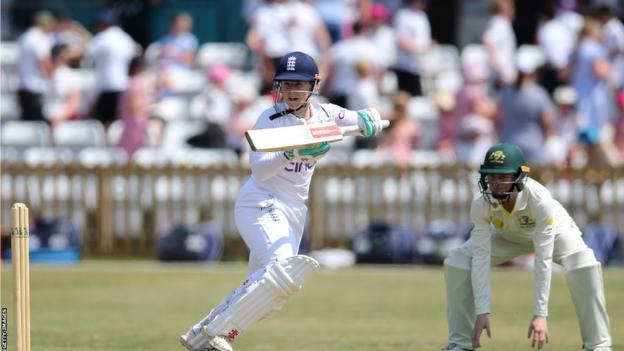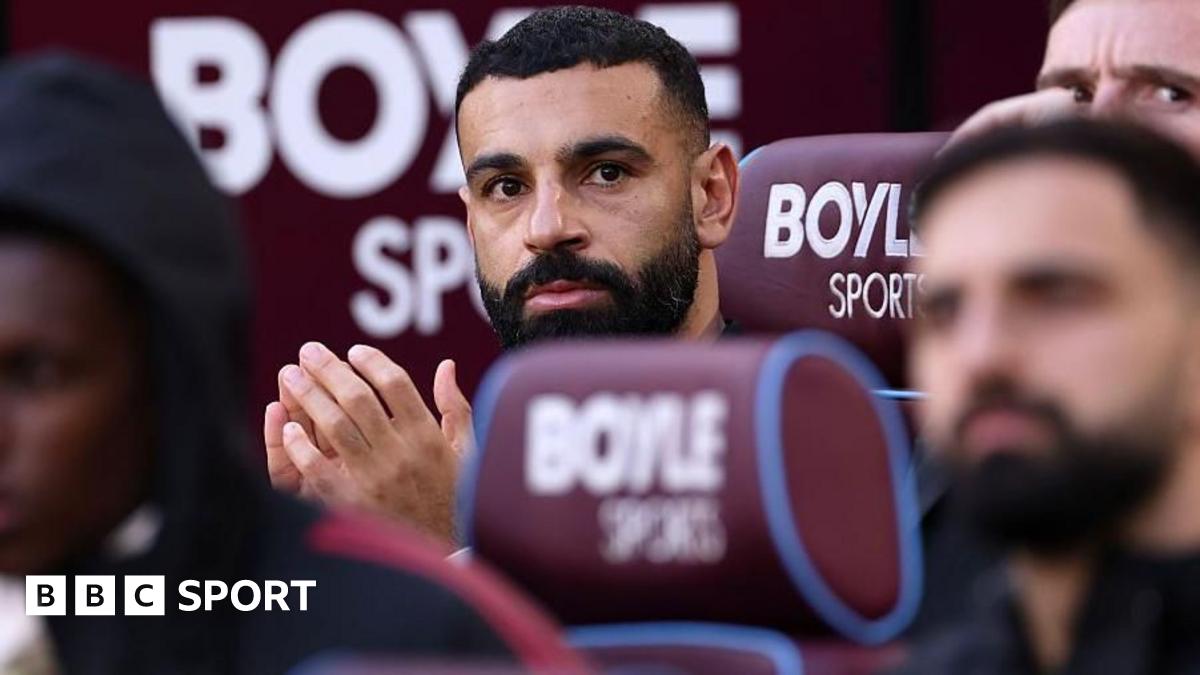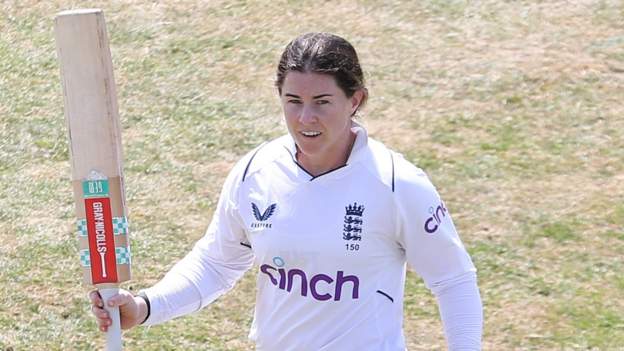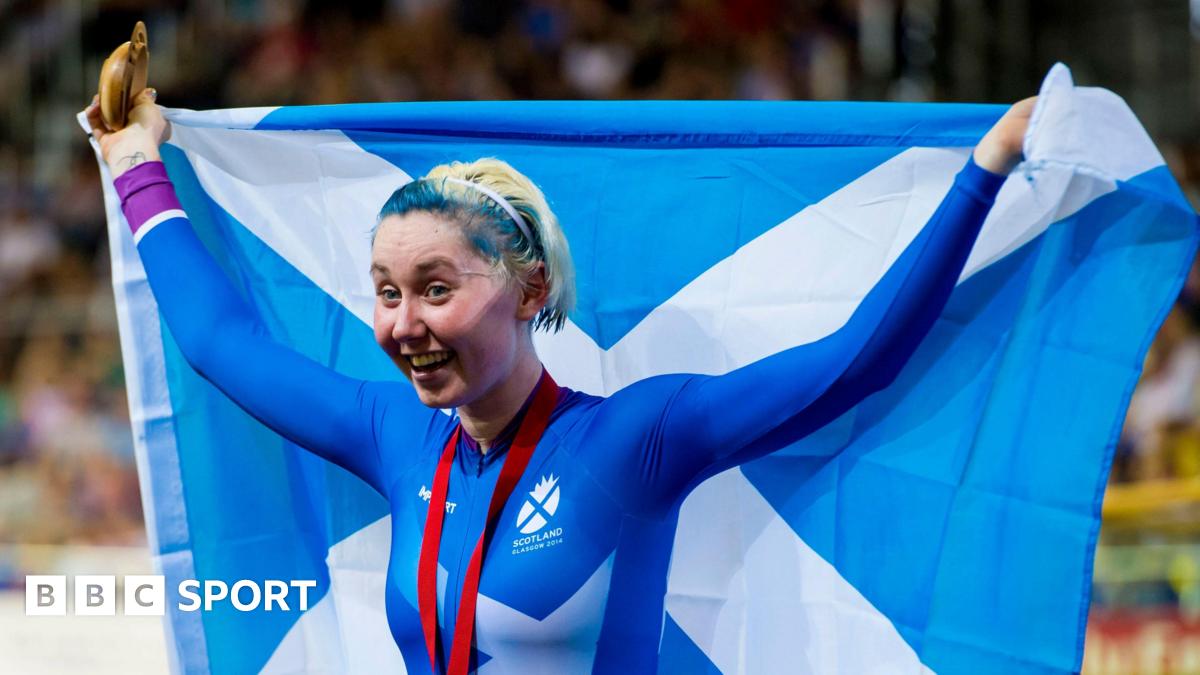| Venue: Trent Bridge Dates: 22-26 June |
| Coverage: Live text commentary and in-play video clips on the BBC Sport website & app, plus BBC Test Match Special on BBC Sounds and BBC Radio 5 Sports Extra. Daily Today at the Test highlights on BBC TV and BBC iPlayer from 19:00 BST |
When Tammy Beaumont got her first period, she thought she would have to give up cricket – because of the players’ white clothing.
The game has changed rapidly during England batter Beaumont’s career, but women’s Test cricket brings its own complications.
One issue is its relative rarity. Even though England and Australia play more Tests than anyone else, they usually only do so once a year – twice if they are lucky.
So when they do play, there is a sense of occasion, a key factor for Beaumont, who represents players in the England and Wales Cricket Board’s (ECB) women’s health group – set up to address the health and wellbeing issues faced by female players.
And that sense of occasion matters. Beaumont acknowledges that period anxiety is openly discussed in the changing room during Tests, but a solution is not quite as simple as the one used in football, where the Lionesses’ switched white shorts for navy.
“We did a survey to see if we wanted to change whites, and would we want to see if there was anything we could do about it,” Beaumont told BBC Sport.
“But the majority said they want to keep wearing whites because of the pride, the tradition and the fact we don’t get to play many Test matches.
“For us, it’s still a massive achievement to play a Test and something we desperately want to do.”
What impact would changing whites have?
As well as the pride of wearing England whites, the nuances of Test cricket complicate the matter further.
Coloured clothing and coloured batting pads are used for limited-overs cricket so that players can see the white ball easier, but Test cricket is played with a red ball, which stands out against the whites.
Changing the Test kit would most likely also require a change of ball colour and equipment, which could impact the way the game is played, from playing hours to how long the ball remains in good condition.
But despite the players’ ambition to keep whites at international level, Beaumont understands that might not be the case in grassroots cricket. There, coloured clothing is being worn more frequently across age groups.
“I’m quite lucky in that it hasn’t really affected me massively in my career, but I can completely understand teenage girls worrying about or not wanting to wear white,” Beaumont said.
She added: “When I was playing boys and men’s cricket, there wasn’t a girls’ changing room.
“Thankfully that’s not so much the case any more but I would be running back and forth from the ladies’ toilets across the clubhouse just to find ladies’ facilities.”
Away from clothing, the accessibility of period products also remains a concern for cricketers at all levels.
“Even in international cricket, we find that we are playing at great grounds but we get to the changing rooms and there are no bins in the toilets, because it’s been built for men,” Beaumont said.
“Some grounds will provide tampons and everything under the sun for us, which is great, but it’s another thing to think about and be more organised with during a Test.”
An ECB spokesperson said they are “striving to lower barriers” to make the game as inclusive as possible.
“We work hard alongside county cricket boards and foundations, clubs and leagues to ensure that players can play the cricket they want, in the formats and kit that they desire,” a spokesperson said.
“In addition, we have set up the women’s health group to get better research on the health, wellbeing and physical performance of female athletes and will take those learnings into the recreational game.”
‘It’s what my body can do – not what it looks like’

Period concerns are just one of the barriers facing young girls and women in sport.
Research published in April by England hockey player Tess Howard found that 70% of the 400 women surveyed had seen girls drop out of sport because of kit or body image concerns.
Women’s health advocacy group The Well HQ also stated 64% of school-age girls will stop playing sport by their mid-teens because of period pain and shame.
The ECB have announced a partnership with Initial to “support period dignity in recreational cricket” and will see in-cubicle period dignity dispensers and period waste bins added to cricket clubs with girls’ sections.
“We know that at the point of puberty there is a huge drop-off of girls playing sport and central to this new partnership is a shared ambition to support women and girls during menstruation and ensure this isn’t a reason to leave cricket,” said an ECB statement.
Former England batter Lydia Greenway, who now works in developing female-specific cricket equipment, agrees that kit and clothing plays a significant role in dropout rates of teenagers in cricket.
“There are a lot of different barriers that might stop a girl playing cricket – some of them involve the game itself, it being long and technical, but another is that they don’t like the cricket whites,” Greenway said.
“We are seeing a lot more clubs and schools opting for coloured clothing and I do think that period concerns are a large part of that, just to make sure that they feel more comfortable.
“There is more confidence now in youngsters to address these issues. If we can take away one barrier in the clothing, it’s one less thing for them to worry about.”
For female cricketers, the size and fit of kit plays a huge role in not only how they look, but how they perform. Beaumont says that despite progress, there are still improvements to be made.
Beaumont says she struggled to find batting gloves – “I’ve got tiny hands, so they’ve always been too big” – as well as pads that fit her.
“I think that some [people] have an idea of what an athletic woman should look like, but I’m an athlete, and I still feel like it doesn’t fit me,” Beaumont said.
“I’m not five foot eight and skinny. I have big quads, so I struggle with kit that is too long in the legs and doesn’t fit me right because I’m not that stereotypical, athletic, tall, skinny girl.
“That’s what makes cricket great. You can have 11 different body types on the pitch and everyone can still do their job, but the kit doesn’t cater for that.”
With women’s cricket getting more television coverage and exposure, and with it increased pressure, players may become more aware of their body image, making kit suitability even more important.
Beaumont says the issue of body image is in the back of her mind, especially with the rise of social media, but she is proud of what her body stands for.
“I like that I maybe represent a different demographic that isn’t always seen on the cover of magazines,” she added.
“Maybe a young teenage girl that has got hips and curves can see me and think, OK, I can play sport too.
“It’s about how I perform and what my body can do instead of what it looks like.”






















